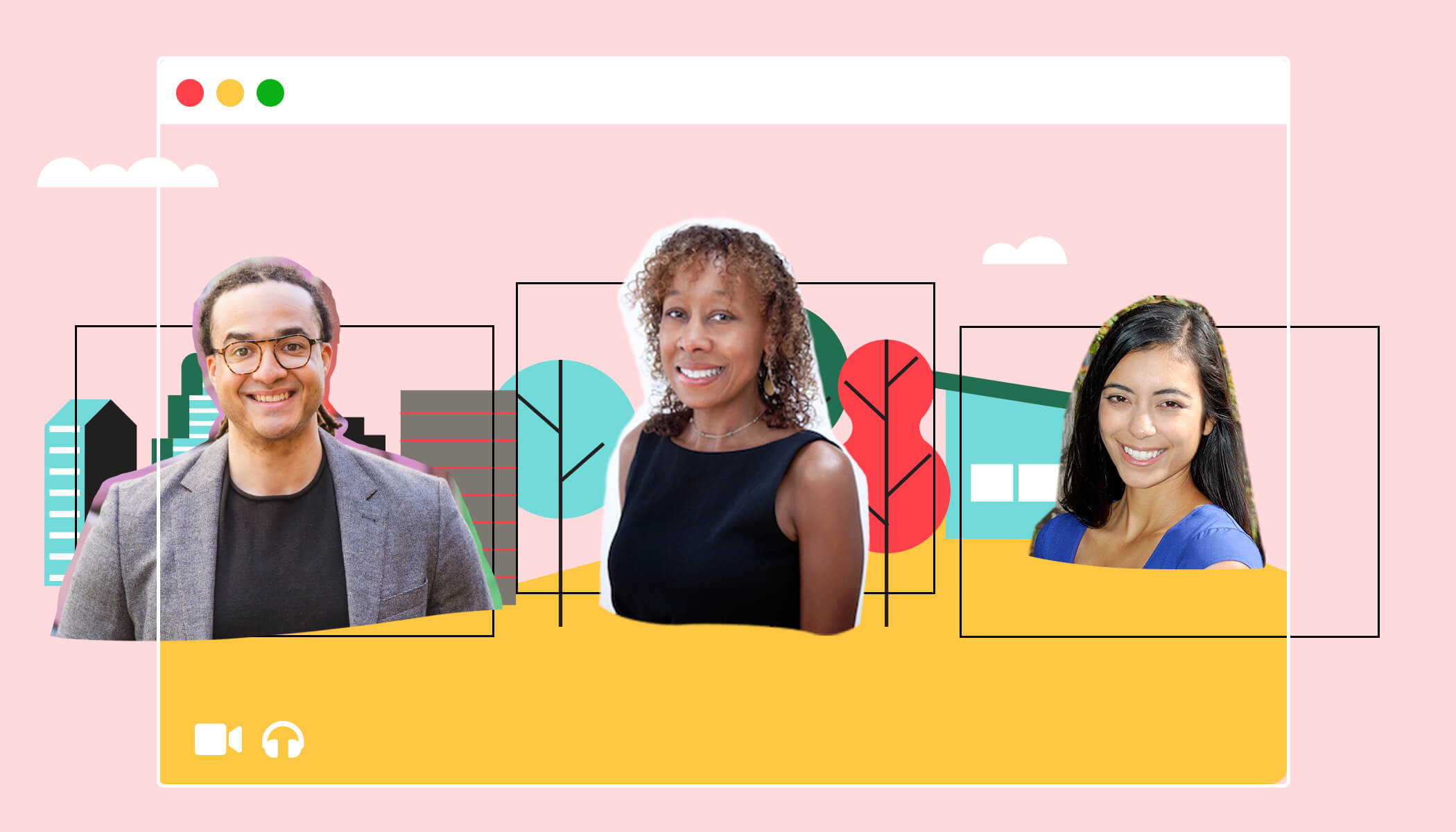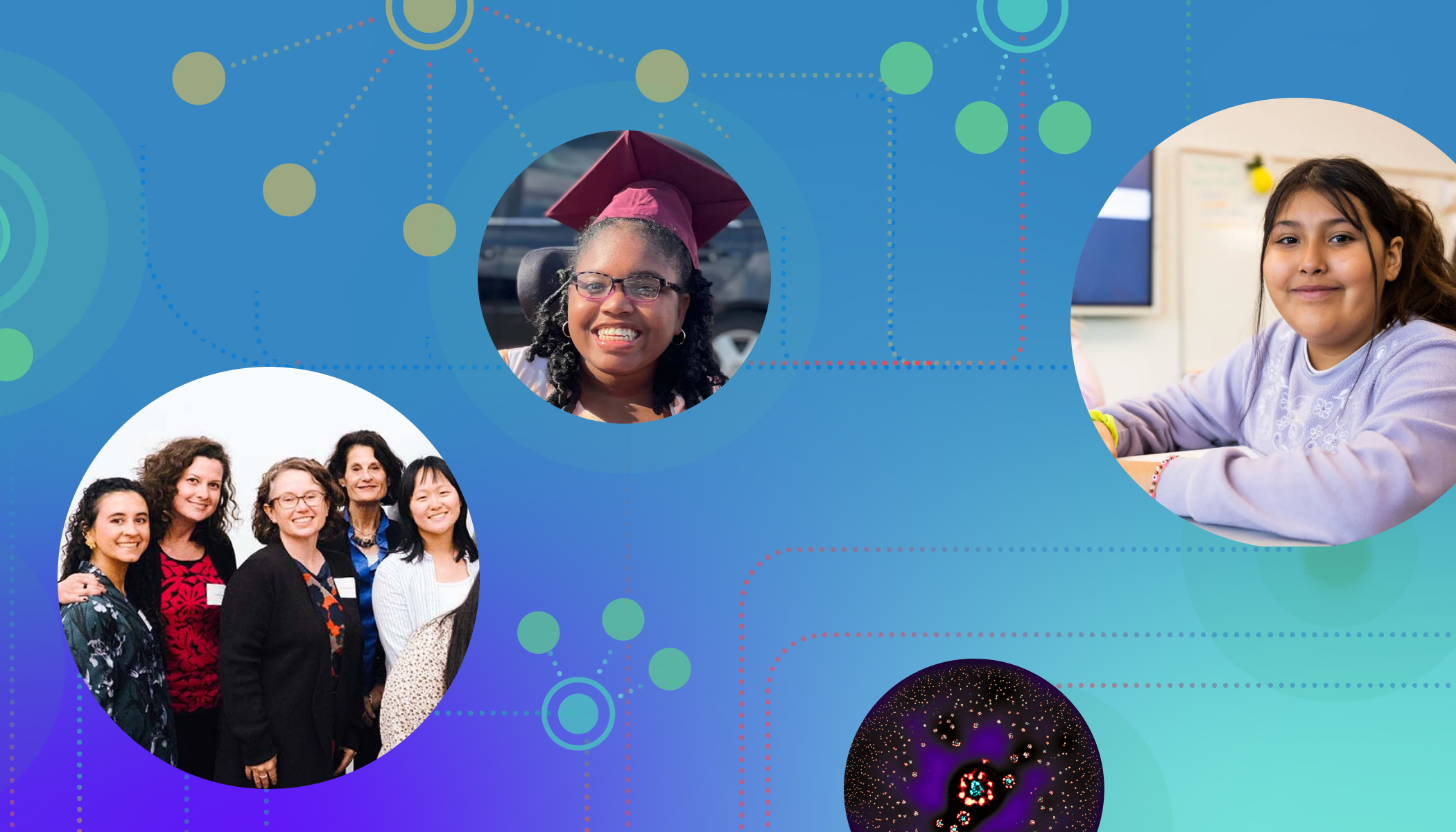April 9, 2021 · 6 min read
Beyond Resilience: A Conversation About Local Nonprofits During And After COVID-19

It’s been more than a year since the COVID-19 pandemic arrived in the Bay Area—and ever since, local nonprofits have been on the front lines of the response. These organizations have provided nothing less than lifesaving support to the communities they serve. But they have also come under extraordinary strain themselves.
With that in mind, three members of CZI’s Community team—CJ Callen, Curtis Yancy, and Elisa Espinoza—gathered for a conversation about what they’ve seen in the Bay Area nonprofit community since the pandemic began, and the work ahead.
This conversation has been edited for length and clarity.
How Nonprofits Are Doing the Impossible
CURTIS: CZI’s offices shut down the first week of March 2020. And within a week, we saw all our grant partners taking action. They closed their offices. They moved their programming from in-person to online. And in many cases, they shifted their entire program models, and started delivering an entirely new set of services to their communities.
CJ: Nonprofits are resilient and flexible; they have to be, especially the small, grassroots ones. But this was something beyond anything they had ever experienced. And I really don’t know how they managed to deliver some of these services during a pandemic.
ELISA: Not to mention the fires. 2020 was one of the worst wildfire years in California history, and our local nonprofit partners had to respond to that as well. I think about Puente de la Costa Sur, which provided direct financial assistance to farm workers, offered translation services, and helped the government evacuate hard-to-reach folks—all at the same time.
CURTIS: Same with Coastside Hope in El Granada.
ELISA: Yes. They provided direct financial assistance. They also helped community members, including undocumented folks, understand their rights. There is a big need for educating people about tenant protection and workers’ rights, espeically in undocumented or mixed status communites. Immigration status, unfortunately, can lead to exploitative situations.
CURTIS: The need was immense. Coastside Hope and Puente de la Costa Sur told us they responded to a significant increase in requests for cash, rental, and food assistance on the coast. Puente recorded a 170 percent increase in families receiving food through their programs. Similarly, Ecumenical Hunger Program saw a nearly 70 percent increase in households supported.
ELISA: All of this speaks to a larger theme we saw this year: local nonprofits are the direct connection to the communities they serve. They know exactly what their communities need. And they’re in the best position to lead and meet that need.
Local nonprofits are the direct connection to the communities they serve. They know exactly what their communities need. And they’re in the best position to meet that need.
Why Investing in People-driven Solutions Matters
CURTIS: It’s amazing what community organizations have achieved since the pandemic began. But the flip side is that their staff have been completely overworked. They always have been. And over the last year, they have been hit so hard—in their work, and personally.
And by the way: who is it that we’re relying on? It’s predominantly Black and Brown folks. Everyone has been leaning on them. But they’re not compensated fairly. They’re not taken care of.
CJ: There was one organization that literally lost seven staff people. They were seven people short and trying to deal with increased need. You can imagine what the toll was on these people working in nonprofits.
The question for organizations like ours that partner with these nonprofits is: what can we do to better support. Early on in the pandemic, we made a series of emergency response grants. The goal was to get immediate dollars to small, grassroots organizations so they could make these pivots—and so they could respond to the human needs that were arising not only in their communities, but also within their organizations.
But there’s the larger issue, too: these community organizations need help building their capacity over the long term. They need help investing in their people.
ELISA: Something we heard and continue to hear from grantees is the incredible impact of multi-year grants for general operating support. Nonprofits know the challenges they’re facing. They know where they need to put their resources. General operating support gives them the power and the flexibility to do what they know that they need to do.
CJ: Absolutely. And that’s an area we continue to grow in ourselves. Over the course of the pandemic, we’ve seen some philanthropies shift their funding toward general operating support. I hope that shift continues because flexible support helps people on the front lines in our communities.
CURTIS: A common saying for some in philanthropy is, “We don’t fund people; we fund programs.” But programs aren’t intangible entities. Programs are people. All this work requires people.
For that reason, we base our own approach to funding in our trust of community and our trust of people—and particularly the Black and Brown, indigenous, and LGBTQ+ folks who are leading so much of the work we’re talking about.
Amidst the Pandemic, Setting a Path Forward
CJ: When I think about everything we’ve seen over the past year, and what funders can do to better support the nonprofits that do so much, I think about my number one rule: do no harm.
Doing no harm means thinking critically about the way you approach the work. It means accepting that you can’t control everything. It means setting reasonable expectations. And it means creating a more humane system—one that’s service-oriented.
CURTIS: Inherent to do no harm is true partnership and true understanding. Because you can’t know if you have harmed a people or a community unless you’re truly partners.
ELISA: And that true partnership is impossible without listening and learning. Listening fully to what organizations are saying—and learning how best to support them.
CURTIS: When I think about the work ahead, I think about the word “resilience.”
We started this conversation by talking about the nonprofit leaders who are doing so much, and who are stretching themselves so thin. They’ve been resilient.
But what would it look like if local nonprofits and their communities didn’t have to be resilient? What would it look like if they actually had the resources they needed—to be, and to reach their full potential? That’s a whole new world.
CJ: We’re actively focused on how we can do more to support our Bay Area partners because we’re asking these big questions. And because they’ve told us: “we need this.”
We know there’s a lot to do, but one thing we’re co-designing with our partners this year are capacity-building programs to help organizations reflect on the challenges of the last year and adapt and scale how they operate—everything from leadership support and staff wellness to internal DEI work.
As we continue to listen to their needs, we’ll become stronger and more effective partners to these nonprofits doing critical work. And in this important way, we can build that new and better world, together.





